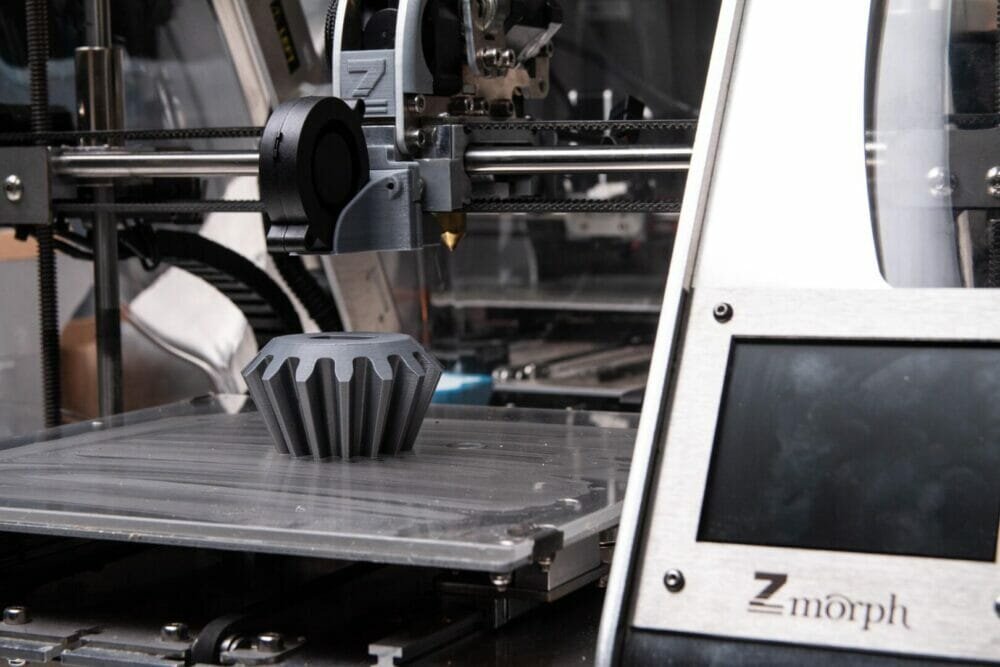With advances in 3D printing machines and a huge array of printing materials on the market, many sectors in manufacturing are already benefiting from the implementation of additive manufacturing (AM). However, while manufacturing companies have experimented with AM for the direct manufacture of final products, the large-scale adoption of this approach remains limited. In this article Neil Ballinger, head of EMEA at global automation parts suppliers EU Automation, discusses why AM might not be for everybody.
Recent research by McKinsey & Company suggests that the use of additive manufacturing, after more than 40 years of development, is becoming more mainstream. By 2020, the AM industry was worth EUR 13.4 billion and was growing at an annual growth rate of 22 per cent, suggesting a more widespread adoption of this technology than in the past. However, just because manufacturing is in the name, this does not mean AM is useful to all manufacturers.
Implementing AM technology to simply switch existing component creations from conventional manufacturing methods is rarely advantageous. Due to the high cost of the technology and compatible materials, the largest benefit of AM is only applied when components are manipulated and redesigned.
Moreover, due to the technology’s freshness, manufacturers often struggle to find a workforce skilled in applying 3D printing to real-world production. The limited skilled workforce is just one reason why manufacturers need to carefully evaluate which of their applications would most benefit from AM.
Reducing energy consumption
Among the numerous benefits of AM is the chance to reduce energy consumption by up to 25 per cent. However, despite this impressive reduction in energy consumption and waste, the limitations in producing end-use parts on a large-enough scale make it difficult for manufacturers to fully reap the benefits.
AM technology is currently limited by its time and complexity constraints. Manufacturers may only find AM technology largely beneficial for creating prototypes, or in fields such as aerospace and medicine, where design manipulation is needed. With all these factors taken into account, it could be far more beneficial for manufacturers to find other methods of energy cost reduction.
Industrial 3D printers require an initial investment of anywhere from five thousand to hundreds of thousands in US dollars for just one machine. If a plant’s main goal when considering AM is to reduce energy consumption, a more cost-effective alternative might be rethinking their energy source, for example by installing solar panels. When sustainability is the priority, implementing solar panels might offer a faster return on investment (ROI) and offer benefits that can be seen across the factory.
Reducing waste
In addition to reducing energy consumption, AM technology can also cut waste and materials costs by up to 90 per cent. However, a study conducted by Atzeni and Salmi in 2011 found that material costs for a selected metal part made from aluminum cost €2.59 per part for traditional manufacturing, but €25.81 per part for AM using selective laser sintering. This means it would cost ten times more for manufacturers to use AM instead of traditional techniques. Although the material costs have likely decreased since this study was published, and the wider range of available materials might include cheaper options, the cost gap between AM and traditional methods remains.

While the environmental benefits of waste reduction are undeniable, the cost benefits are left to be desired. Manufacturers could still become more environmentally conscious whilst retaining a lower material cost by implementing other waste reduction methods, such as closed-loop manufacturing, where materials used in production are reused.
While AM has many benefits, the technology is still in the early stages of usefulness to the general manufacturing industry. Until progress is made in the speed of the process and the cost of equipment and materials, other production methods might be better suited to applications where low-cost, time-efficient production is needed. On the other hand, although the wider manufacturing industry might not benefit from this technology anytime soon, AM is benefiting sectors such as aerospace, medical and energy. AM technology might not be what manufacturers currently need, but with progress, this will likely change.








